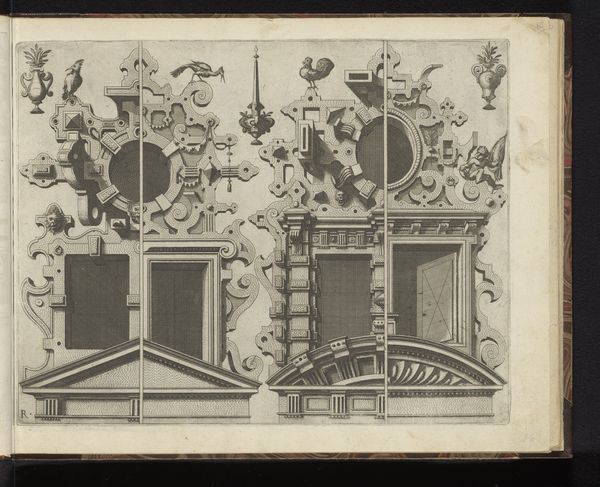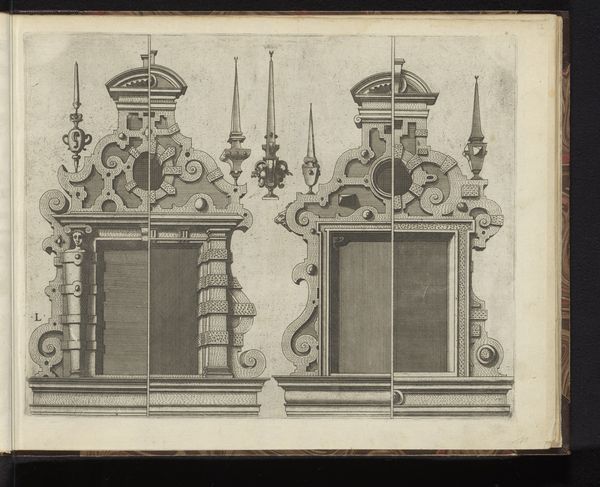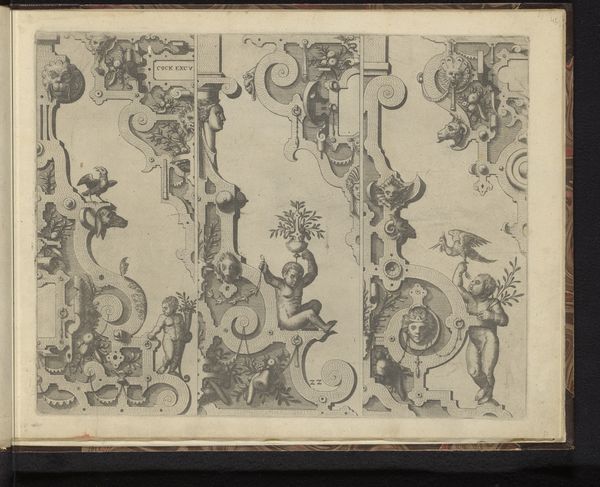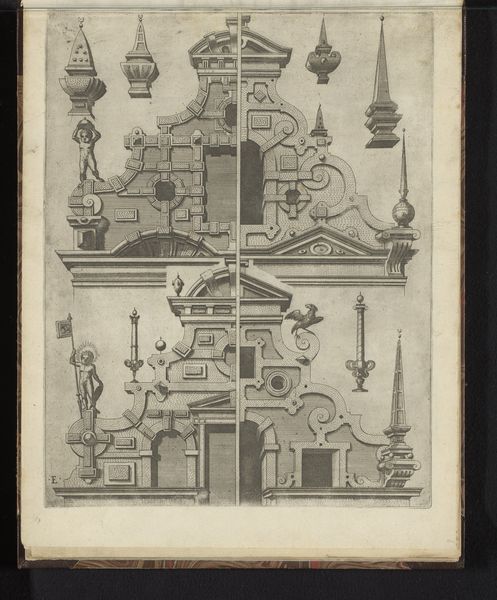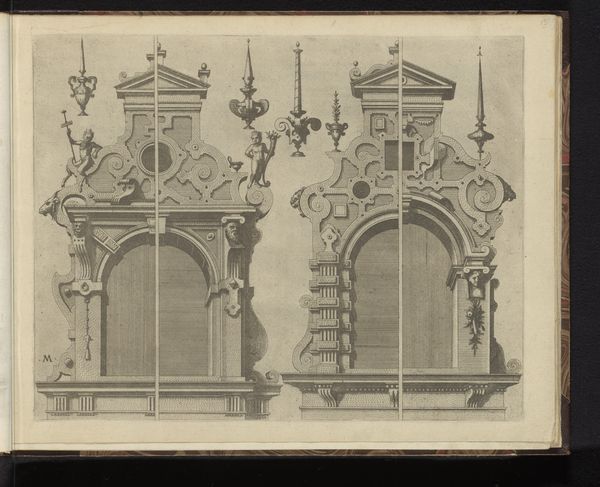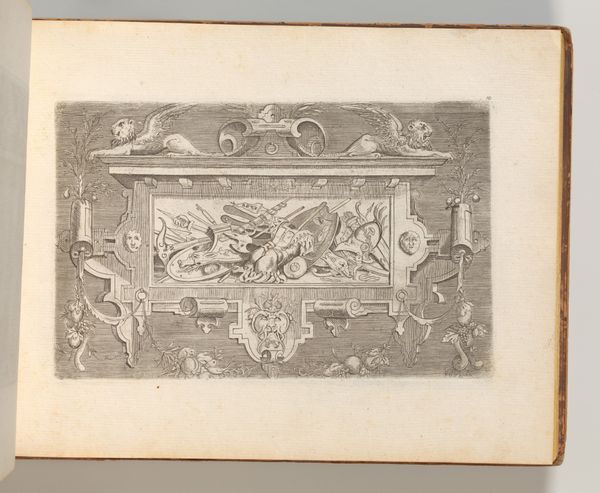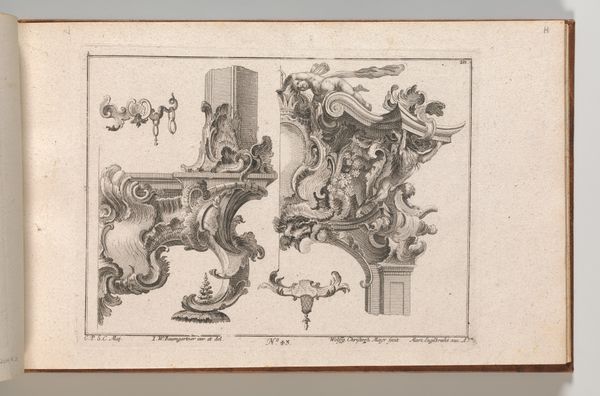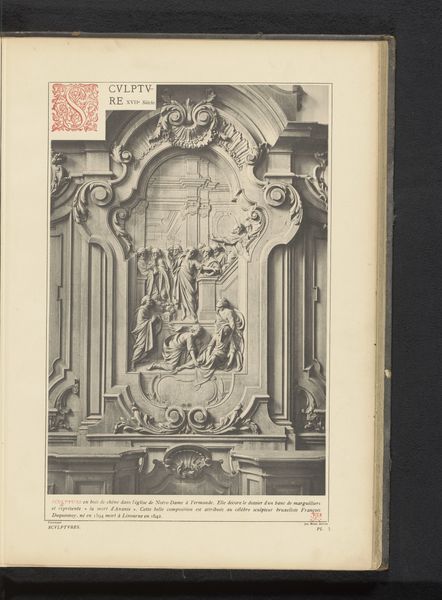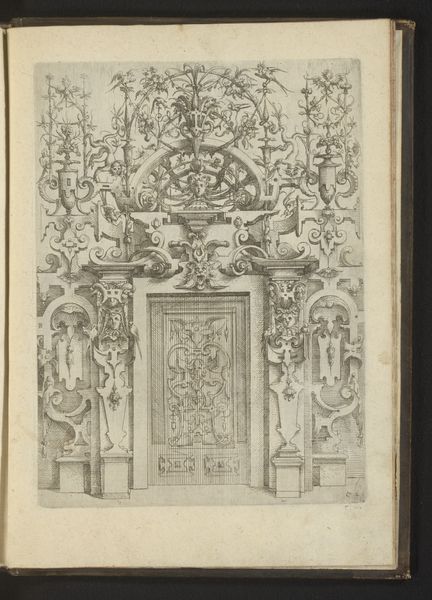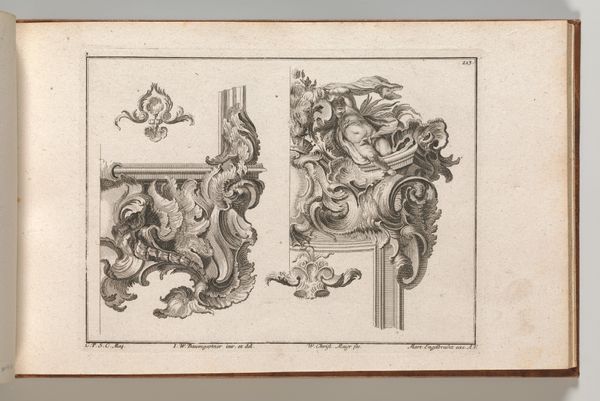
drawing, print, engraving
#
drawing
#
toned paper
#
pen drawing
#
mechanical pen drawing
# print
#
old engraving style
#
11_renaissance
#
personal sketchbook
#
geometric
#
pen-ink sketch
#
pen and pencil
#
pen work
#
northern-renaissance
#
decorative-art
#
sketchbook art
#
engraving
#
pencil art
Dimensions: height 235 mm, width 300 mm
Copyright: Rijks Museum: Open Domain
Curator: Looking at "Vier halve lucarnes" from around 1565, attributed to Johannes or Lucas van Doetechum, I’m immediately struck by the density of line work, the precision evident in each curve and angle. Editor: My eye is caught by the sheer detail; it's almost overwhelming. These elaborate structures, they evoke a sense of both grandeur and, strangely, constraint. It’s as though architecture is becoming jewelry. What purpose would this engraving serve? Curator: This work is likely a print intended as a design resource. Artists and craftsmen during the Renaissance would use such prints as models for architectural elements, furniture details, or even jewelry. Think of it as a catalog of ornamental ideas circulated widely through the printmaking process. The paper stock it is printed upon gives the engraving that toned appearance as well. Editor: So it is a kind of pattern book? Then it brings an intriguing layer of social context to my attention; How readily available would this design be to lower or middle class artisans? And furthermore, what kind of social mobility could access to a book like this encourage in Renaissance era society? Curator: Access was largely determined by wealth, yes, but the printing revolution made designs like this available to a far wider audience than, say, a unique drawing made for a wealthy patron. The repetitive nature and geometric components, the shapes used... even the imagery seems freighted with meaning, all circulating outwards, towards the wider world. Editor: I wonder, does the symmetry also function as more than just decorative flair? It echoes older, established visual programs which suggests this "pattern" or template may be intended to inspire, rather than prescribe. And, to the modern eye, it still feels very vibrant. It has a striking immediacy, a very visceral sense of being handmade. Curator: Precisely, despite its detailed and elaborate appearance, the "lucarnes" retain a remarkable vibrancy thanks to the quality of the line. One feels close to the human effort involved in their construction. It allows the modern observer to appreciate a level of accessibility that still feels quite refreshing. Editor: Absolutely. And to look at these images today, in a digital context, also highlights how much we've inherited—visually and conceptually—from the hands of artisans and images that came before. Curator: A testament to the enduring power of circulating material culture!
Comments
No comments
Be the first to comment and join the conversation on the ultimate creative platform.
